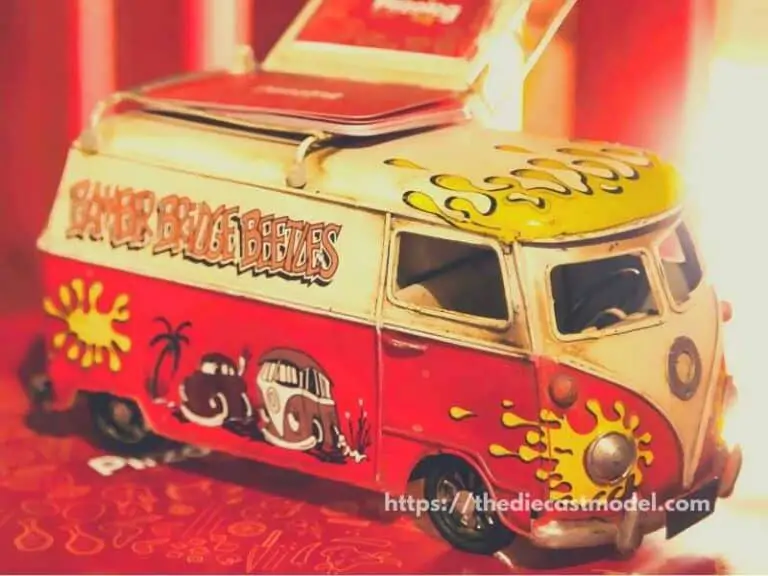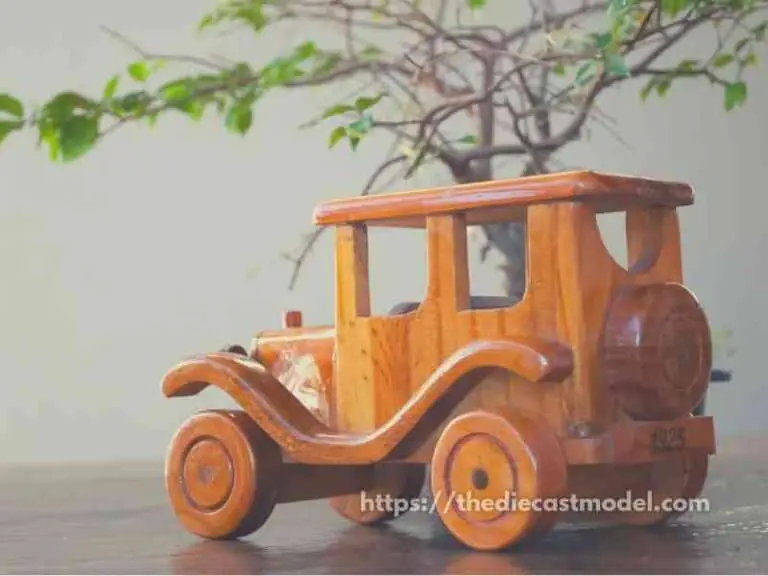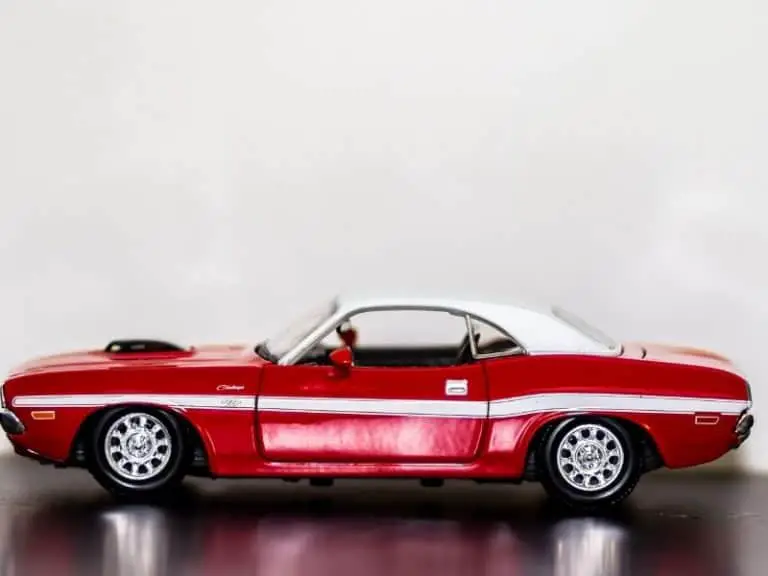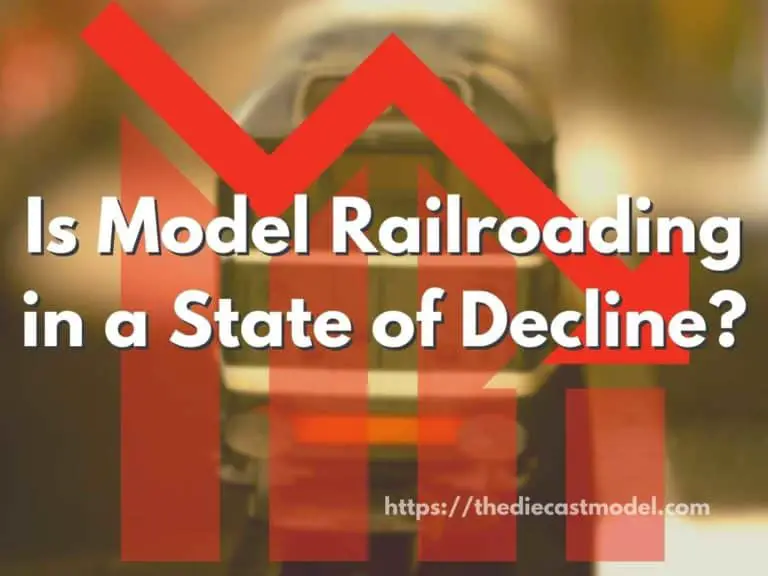What are Toy Planes Called?
Toy planes are called RC Planes, Diecast Aircraft, or Model Kit Planes, depending on their purpose. RC Planes are remote-controlled airplanes you can fly with a controller. Diecast aircraft are the ones you display on shelves and are usually made from metals, while the model kit planes are the ones you can build from scratch.
In this blog post, I will give a brief introduction to each of these toy planes, so you will know which are the ones you’re looking for.
Now, let’s start introducing each of them.
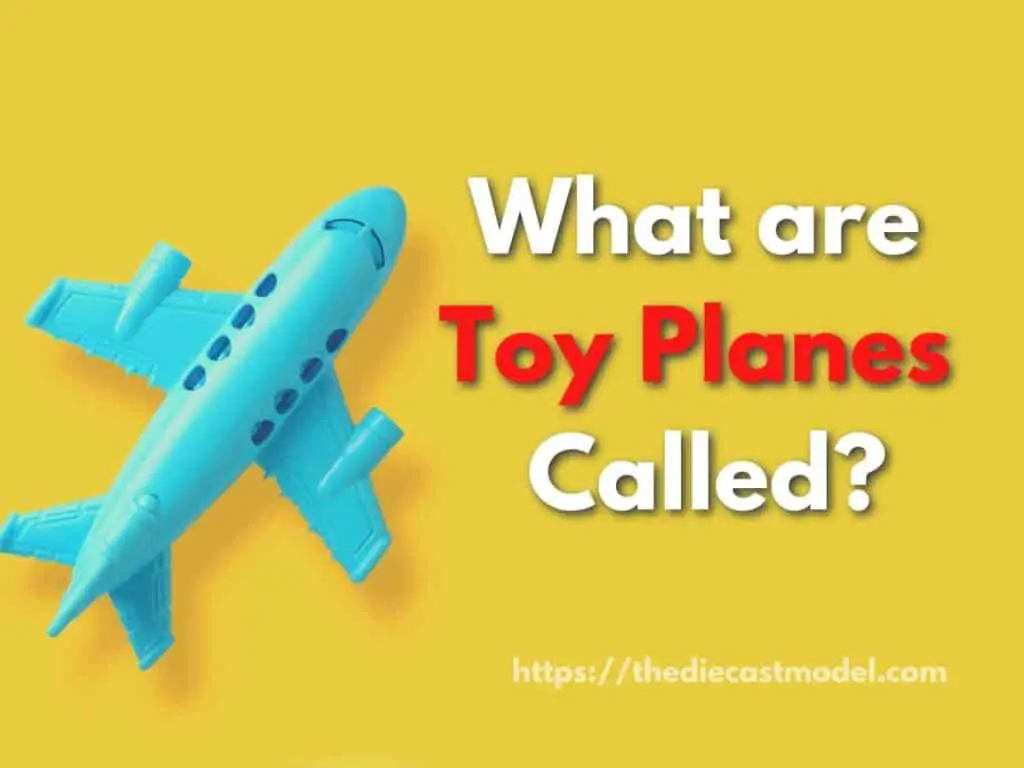
RC Planes
RC Planes or radio-controlled aircraft are plane toys that are used for flying purposes. These toy planes can fly with the aid of remote control. This has been famous in recent years due to the advancement in technology such as batteries, computers, and cheaper cost of productive.
A radio-controlled aircraft (also known as an RC aircraft or an RC plane) is a small flying machine remotely controlled by an operator on the ground via a hand-held radio transmitter.
Flying RC planes as a hobby skyrocketed in the 2000s, thanks to advancements in motors, batteries, and electronics’ cost, weight, performance, and capabilities.
And, there are various models and styles to choose from.
Park flyers and trainers are available for beginning hobbyists. In addition, glow plug engines, electric-powered, and sailplane aircraft are available for more experienced pilots.
Jets, helicopters, pylon racers, autogyros, 3D aircraft, and other high-end competition aircraft provide an adequate challenge for expert flyers.
Some models are designed to look and operate like birds.
Replicating historic and little-known types and making full-size aircraft as “flying scale” models, which is also feasible with control line and free flight model aircraft, achieves maximum realism and behavior when built for radio-control flying.
Radio-control scale aeromodelling is the most practical way to re-create “vintage” full-scale aircraft designs for flight.
This is especially true for planes from a long time ago.
There are multiple purposes for replicating full-scale aircraft designs, such as aviation history, testing future aviation designs, or even realizing never-built “proposed” aircraft.
Full-scale aircraft designs from every era of aviation–from the “Pioneer Era” and the start of World War I to the twenty-first century, have been modeled as radio-control scale model aircraft.
Since the introduction of modern digital-proportional, miniaturized RC gear on the market in the 1960s, various scale sizes of RC scale aircraft have been built.
New, more sophisticated toy RC airplanes, helicopters, and ornithopters have appeared on toy store shelves since around 2004.
This new RC toy category distinguishes itself by:
- Proportional throttle control; prevents the excitation of phugoid oscillation (“porpoising”) whenever the throttle is changed. It also enables manageable and consistent altitude control and a reduction in altitude loss in turns.
- LiPo batteries; for lightweight and a long flight time.
- EPP (Expanded Polypropylene) foam construction; makes them virtually indestructible in normal use.
- Low flying speed and typically rear-mounted propeller(s); they are less dangerous when colliding with people or property.
- Stable spiral mode; causes simple turning control where “rudder” input results in a constant bank angle rather than a constant roll rate.
As of 2013, most toy RC airplanes lacked elevator control.
The lack of elevator control is done to cut costs, allowing easier control by beginner users of all ages.
As a result, the prices range of RC planes is now from $20 to $40.
Crashes for these planes are common. That’s why skills when flying these toy planes are necessary.
Two skills are essential in learning how to fly these planes, which are throttle control and turning reversal.
When throttle control and turning reversal (when flying in the opposite direction of the pilot) become second nature, you can start to learn how to fly a more expensive hobby class RC aircraft.
Fun Fact: Did you know that the largest RC plane is said to have a length of 17.8 feet and a wingspan of 16.24 feet? If you’re interested in the largest RC plane, you can find it in my other blog post. Here is the link: The Largest RC Planes
Model Aircraft or Diecast Planes
Model Aircraft are toy planes that are used for display purposes. These toy planes are usually static in nature, which means that it is not meant for flying. Model Aircraft can be made of plastic, wood, or metal. Metals are one of the most popular materials used in creating model aircraft and are called Diecast.
A model aircraft is a tiny aircraft that can be a replica of an actual or fictitious aircraft.
Model aircraft are classified into two types: flying and non-flying.
Non-flying models are also known as static, display, or shelf models.
Static models range from mass-produced toys made of white metal or plastic to highly accurate and detailed museum models requiring thousands of work hours.
Many are sold as kits and are typically made of injection-molded polystyrene or resin.
Static model aircraft are used for display, education, and data collection in wind tunnels to design full-scale aircraft.
Static model aircraft can be built out of any suitable material, which frequently includes plastic, wood, metal, paper, and fiberglass.
These models can be built to a specific scale, allowing the original’s size to be compared to other aircraft. Models may arrive finished or unfinished and require painting or assembly with glue, screws, clipping together, or both.
Static model aircraft are primarily available commercially in various scales ranging from 1:18 scale to 1:1250 scale.
Plastic model kits that need assembly and painting are typically available in the following scales: 1:144, 1:72, 1:48, 1:32, and 1:24. Die-cast metal models (pre-assembled and factory painted) are available in scales from 1:48 to 1:600.
We are going to talk more about model kits later. For now, let’s continue.
Sky birds introduced the 1:72 scale with their wood and metal model aircraft kits in 1932, and Frog followed suit with their “Frog Penguin” brand in 1936.
The US War Department popularized the 1:72 scale in the United States during WWII after it requested models of commonly encountered single-engine aircraft at that scale and multi-engine aircraft on the 1:144 scale.
Following WWII, manufacturers continued to produce kits in these scales, but kits in other divisions of the imperial system were also introduced.
In Japan and France, both scales 1:50 and 1:100 are common. In addition, airline promotional models are produced in scales ranging from 1:200 to 1:1200.
Many airlines around the world allow their planes to be modeled for publicity purposes.
Airlines used to order large-scale models of their aircraft to give away as promotional items to travel agencies.
Desktop model airplanes may be presented to the airport, airline, and government officials to promote an airline or commemorate a new route or achievement.
Recommended Read: For more information regarding the diecasting process, you may read this blog post: Where does the term diecast come from?
Model Airplane Kits
Model airplane kits are toy planes that you build from scratch. Usually, these models can be bought in a box in which you manually build them up while following instructions. Hobbyists prefer these toy planes to boost their creativity since they can be creative in painting and designing their models.
There are numerous model airplane kits to choose from, ranging from the World War II P-51 Mustang to the modern-day Boeing 777.
You can build a scale model to display as part of a collection, or you can buy a radio-controlled model to fly yourself.
Simple kits include most of the detail work, so you won’t need to paint them or devote much time to assembly.
That’s why you don’t need to worry if you’re a beginner in building model kits.
The reason is that model kits have pre-cut or laser-cut pieces that snap together easily and frequently come with decal stickers to finish them off.
Scale replicas allow you to build a real aircraft on a smaller, more accurate scale.
The most common scale ratios are 1:72, 1:48, and 1:32.
Some of these models have incredible detail, including tiny movable pieces, working propellers, and cockpits where you can sit a pilot figure.
Because scale replicas are unfinished, there are times where you need to paint them, which is appealing to many model airplane enthusiasts.
Model kits appeal to enthusiasts since it boosts their creativity by finding unique ways to make their models special.
Common airplane model kit brands are: Tamiya and Hasegawa
Flyable model airplane kits are either packaged with or designed to be compatible with electronic components.
To facilitate flight, these kits typically include lightweight components such as balsa wood or plastic.

“Only the things I love”
thediecastmodel.com is reader-supported. When you buy through links on the site, I earn an affiliate commission.
So, here are the things I love when taking care of my Diecast Models.
Cleaning the Models
The first we are going to talk about is cleaning the models.
Removing Dust
- Air Brush – For me, this is the best since it not just removes dust but you can use it in painting/clear coating.
- Air Duster – This is a good alternative to Airbrush
- Normal Brush – If you are short on budget, you can use a normal brush. However, make sure that the brush has soft bristles because there are some hard brushes than can cause scratches. That’s why I recommended a good brush that can do the job properly.
Cleaning and Shining Hacks
Well, here are some of my cleaning hacks for removing scratches, oxidation, and so much more.
- Removing Decal Adhesive – Use Goo Gone on those hard-to-remove decal adhesives. It works fast and works like charm!
- Waxing and Polishing – Here is something a lot of people don’t know. Waxing protects the clear coat and paint while polishing shines the model. Instead of buying it separately, use a 2 in 1 to save money. Get this instead.
- Beginner Wax – The wax I recommended earlier is good and provides the best results based on my experience. But a beginner might have a problem especially if they’re not good at applying wax. Solid wax reaching hard to reach surface can be hard to remove. You have two choices here. One is to use a qtips to reach those surfaces, another is to use a liquid wax I recommended.
- Cleaning Wheels, Rubber, Plastic – Do not forget that rubber and plastic surface are quite different, especially in the cleaning process. Just wiping it down won’t do the job. That’s why I use Meguiar’s Vinyl and Rubber Cleaner and Conditioner. Works like charm!
- Make the Wheels Shine! – Making our models look good won’t be complete without tiny details such as shiny wheels! Do not forget this because however small this is, the difference can be as big as night and day.
- Remove Scratches Easily – Tiny scratches are not the end for your model. Here is a simple trick I’ve been using to make my models look scratch-free even without repainting. Use T-Cut.
Painting the Models
Painting Tools
Make sure when you paint models, have these ready.
- Tape – A tape is important if you are painting a straight line. Furthermore, it will prevent your paint to scatter on other parts. I recommend Tamiya Tape since it is really made for models. Furthermore, they stick really well preventing paint splatters.
- Brush (Beginner) – Find a good set of brushes to paint your models. Of course, you can opt for an airbrush but it’s quite expensive.
- Airbrush (Intermediate/Expert) – This will yield a significantly better result than an ordinary brush because you can easily spray the paint evenly. I recommend this if you know what you’re doing.
- Stand(Optional) – Stands are good because it can be hard to manually hold the models while painting. It is optional but in my opinion, the price is well worth it for the comfort it gives.
- Drop Cloths – Drop Cloths will protect your surroundings from the paint.
- Primer – The most common beginner mistake I see is painting models without any Primer. A primer will prevent imperfections such as bubbles or paint not sticking to your models. It is a small price to pay for quality results.
- Clear Coat – A clear coat will protect the paint of your models. This will make the paint last longer. Also, it is the one responsible for making your models shine.
Paints
Of course, you can’t do painting properly without paint. So here are the ones I recommend.
- Acrylic Paint – Good for beginners because it dries quickly. However, it doesn’t produce results as good as enamel paint.
- Enamel Paint – Provides a good quality finish and longer-lasting paint. However, it takes longer to dry and requires expertise to use.
Model Maintenance
Model Storage
- Simple Wood Cabinet – While it doesn’t let you display your models, wooden cabinets are good storage for these models. For one, they are not heat conductors which means that the temperature inside will remain constant and remain cool. Furthermore, they prevent light from reaching the models which can cause oxidation.
- Clear Cabinet with Lock – If you want to display your models, then I recommend this. It closes so dust won’t easily get to your models. I also recommend you don’t put more than 1 model in each compartment since metals are good conductors of heat.
Model Photography
So you want to show off your models to others? Well, I got you covered.
Here is my beginner-friendly model photography tutorial that teaches everything from taking pictures to the editing process.
You will also see me doing hands-on photography in that tutorial.
Here is the link: How to Take Pictures of a Diecast Model or Model Kit | Helpful Illustrated and Video Guide
Source

